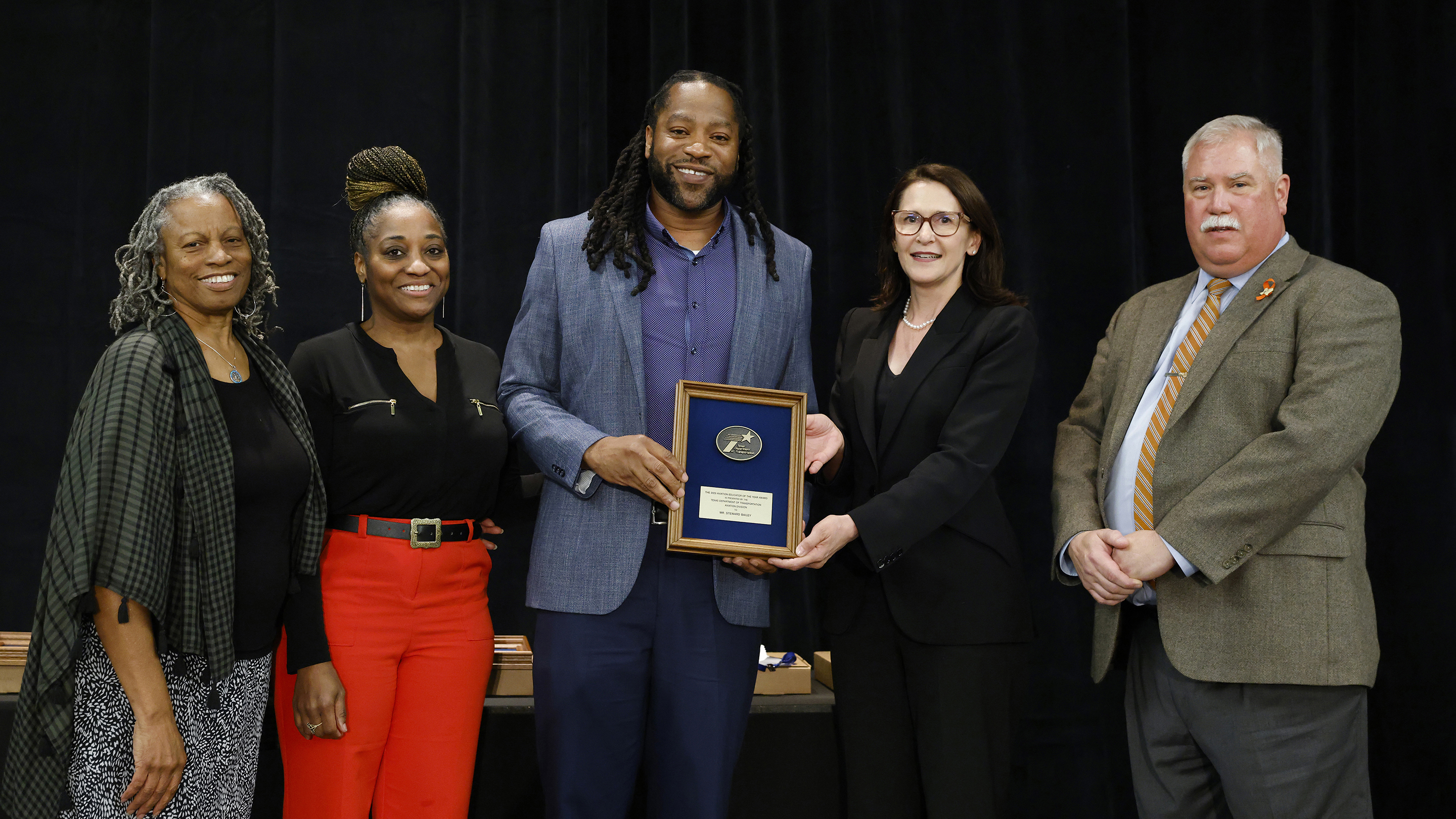Texas teacher named educator of the year
Steward Bailey, an aerospace engineering teacher in Houston received the inaugural Texas Aviation Educator of the Year award from the Texas Department of Transportation Aviation Division.
The award was presented at the Texas Aviation Conference in Galveston, on April 13. Aviation industry professionals, educators, and members of the Texas Department of Transportation gathered to collaborate and converse about the advancement of aviation in the state.
“Students thrive when given opportunities. And our winner has given his students the opportunity to thrive and discover a passion for aviation,” state officials said in a video prepared for the award presentation.
“It was probably one of the most impactful days since I’ve been starting in aviation,” said Bailey, who felt reaffirmed by the recognition for the work he was doing. “Everything I’m doing is for a reason,” he said. “I am actually making an impact in the community.”
Bailey’s community impact is unquestionable. He has been building his aviation program at Elsik High School for a few years
It started with a conversation with the district’s career and technical education director, Jennifer Baker. When the two were looking to introduce aviation to the school, they came across the AOPA High School Aviation STEM Curriculum. Bailey was able to attend a training course in Frederick, Maryland, and AOPA's STEM symposium in Denver. He took what he learned back to his school and is currently working off the tenth and eleventh grade curriculum.
“The curriculum is amazing for helping any instructor break down and traverse through aviation science and applications and whatnot,” said Bailey. “I didn’t have anything else to immerse my kids into aviation in such a structured way.”
The aviation program also provides hands-on opportunities for career and technical advancement. Students are given opportunities to earn their remote pilot certificate; visit aviation companies; and even go up for a flight—Pat Brown, AOPA Foundation school mentor, gives discovery flights to students in Bailey’s program, “so the kids can really feel what it is to fly,” said Bailey. “[It] has been a tremendous motivational piece.”
Houston has much in the way of aerospace experiences to offer Bailey and his students. They’ve visited the Lone Star Flight Museum, NASA's Johnson Space Center, and various industry organizations that are eager to highlight opportunities for the incoming workforce. “We have a lot of different avenues these kids can go right here locally,” said Bailey, frequently reminding his students that there are more airports in Texas than colleges.
Perhaps most impactful on his students has been the opportunity to build a Van’s RV-12iS aircraft in partnership with Tango Flight. This multiyear project gives students hands-on opportunity to practice what they learn in their curriculum and more. A dedicated group of volunteer mentors from AOPA also donate their time to help build the airplane.




Bailey is an A&P and a student pilot on pause. He flew approximately 32 hours before a move, COVID-19, and the financial commitment of flight halted his training, but he brings what he learned into the classroom, which brings his instruction to the next level. “I actually wanted to be a real model for my kids and I thought becoming a pilot would’ve been the best way to model what I need to do,” said Bailey. “It’s made me a better instructor in the course.”
For most of his students, Bailey—and the program he built—is their introduction to the industry. A majority of his students, if not all, come into the program unfamiliar with the aviation industry and the intricate web of what’s available.
After being exposed to aviation technology, fabrication, and the curriculum, Bailey is seeing a minimum of 50 percent of his students on a pathway to different aviation institutions and programs.
Some go on to institutions like Embry-Riddle Aeronautical University, some enter aviation maintenance programs, others are headed for careers in the airlines or the military.
“This [program] is transforming the community as a whole because these kids never thought of aviation at all,” said Bailey.
The Texas Aviation Conference was not only a vehicle for awarding excellence in Texas aviation, it also provided a venue for Bailey to have conversations about bringing companies and entities together with school personnel to speak about how aviation and aerospace programs can be expanded in Texas schools.
Conference attendees from the industry were eager to network with Bailey about how his program could be replicated and what support could benefit it. “It brought me to a circle and network of aviators who I respect and who I can learn so much from,” said Bailey, who is constantly thinking of ways to bring more opportunities to his students.
“My main focus now is bringing industry into schools,” said Bailey. He has hopes for ongoing intermingling and collaboration between schools and industry, hoping that the earlier the industry can reach students, the easier it will be for students to find direction and know which skills they need to acquire to go into their intended field.
“The demand for personnel in aviation is huge,” said Bailey. “I think industry needs to open up the doors.”





